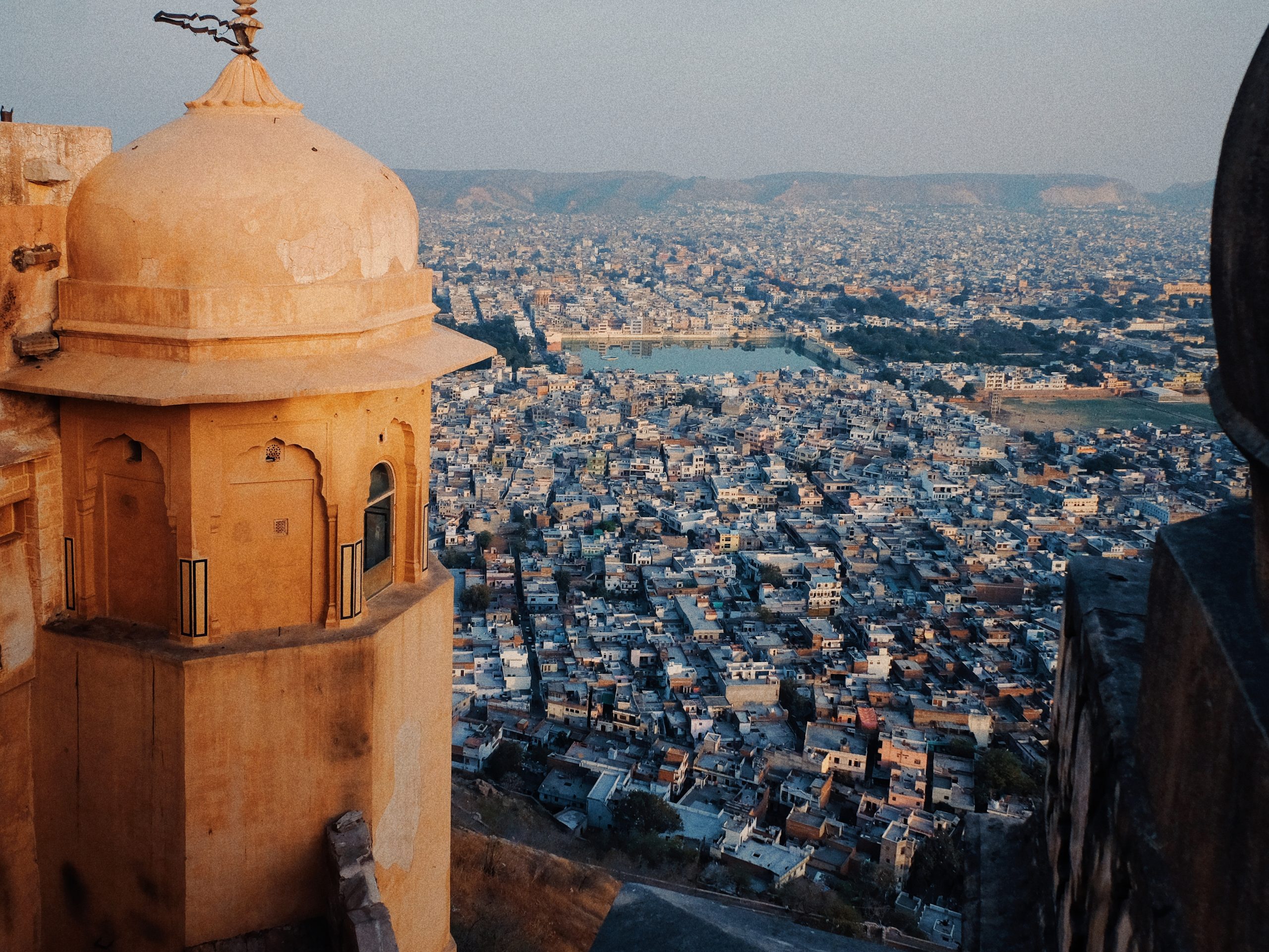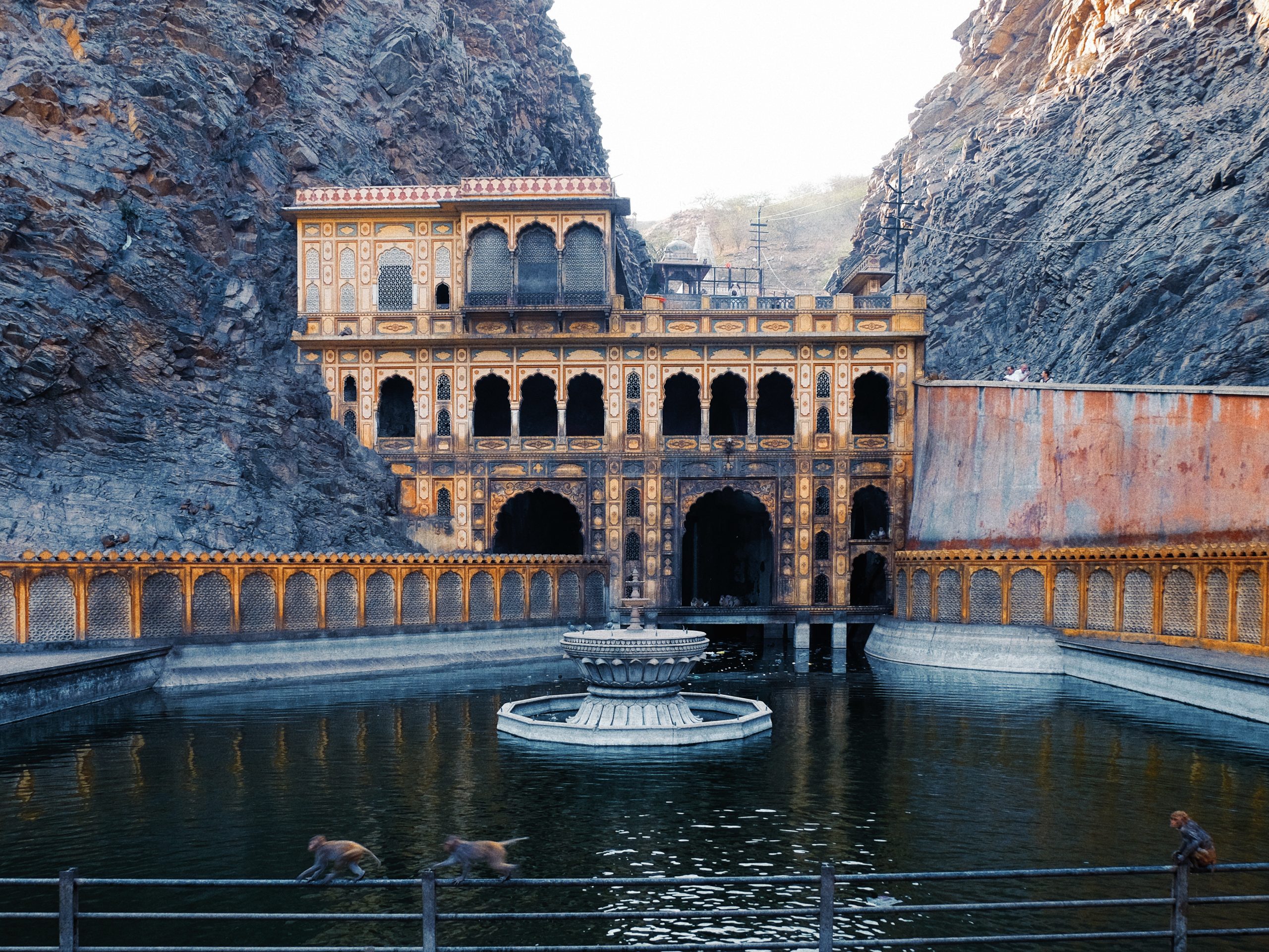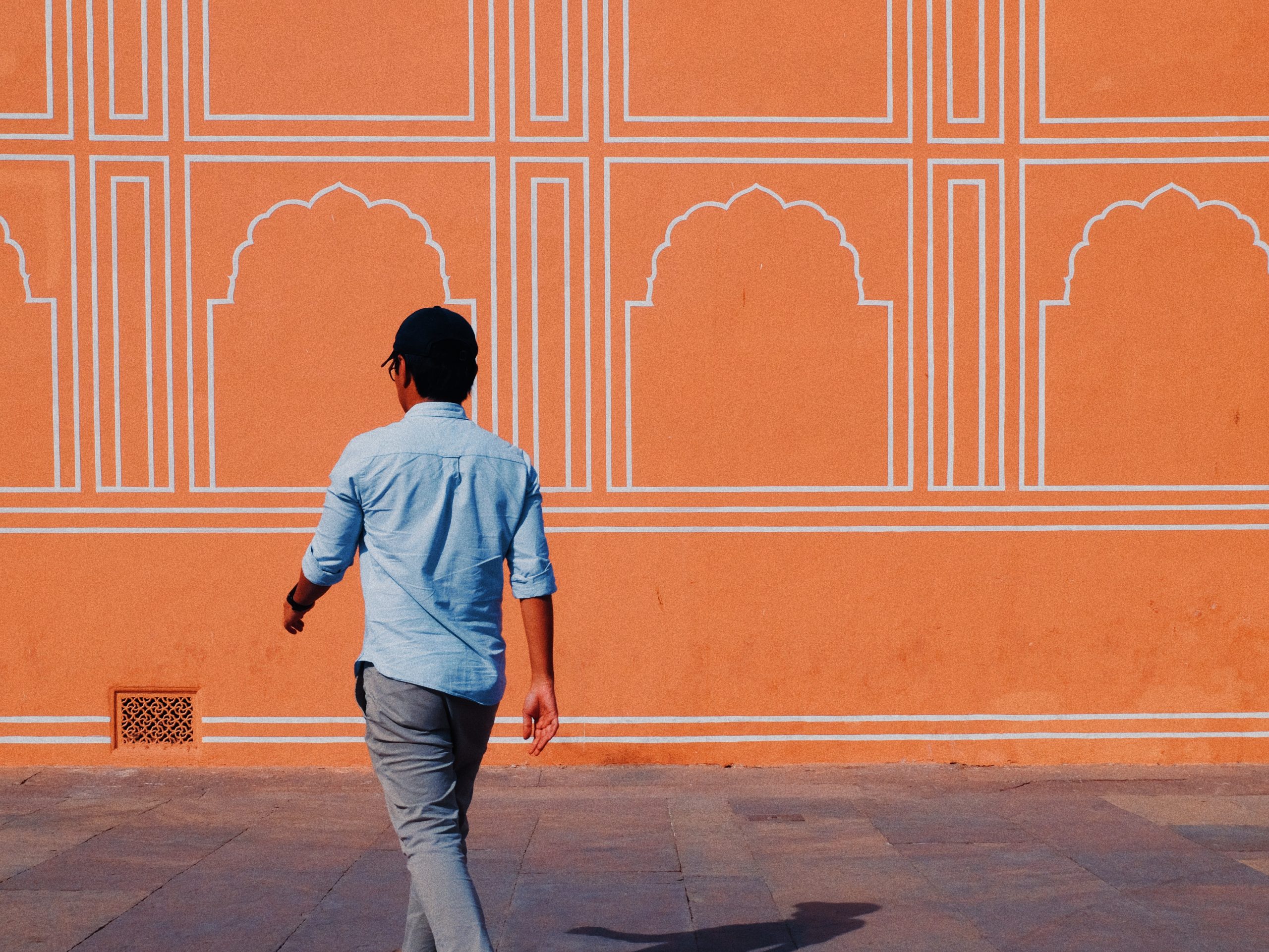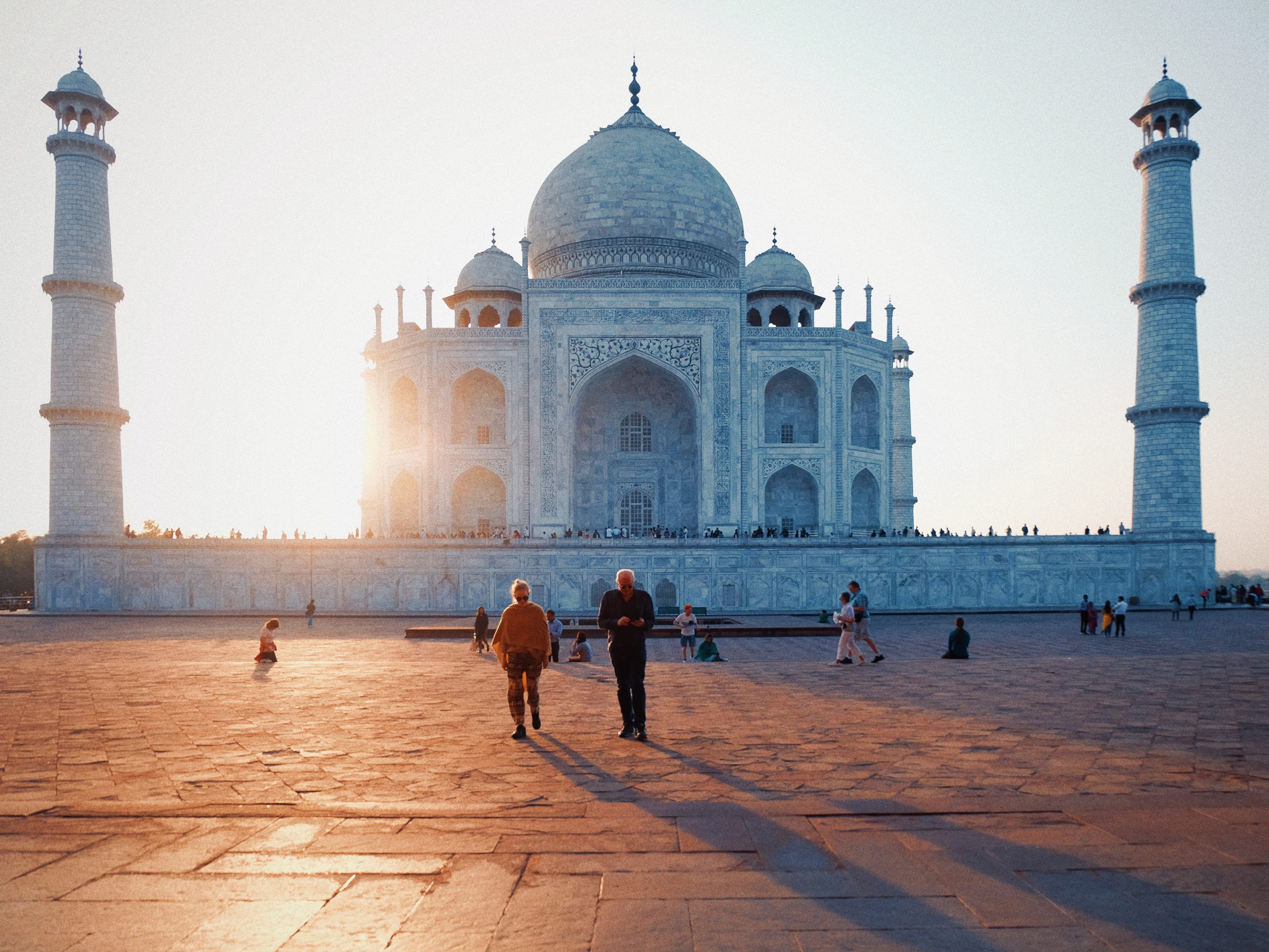
February 19, 2018. On my last day in Jaipur I proceeded to Amer (Amber) Fort a few kilometers north of the city. It is part of the three-fort complex that traverses ‘Eagle Hills’ and forms a sort of ‘great wall’ that was meant to protect the city from invaders. I visited the first of such forts (Nahargarh Fort) the day before. It is also called the Amber Palace because it served as the main residence of the Rajput Maharajas and their families for centuries. The fort overlooks a lake that, aside from serving as the main water supply of the fort, beautifully mirrors the amber colors of the palace on its surface.





One of the tourist highlights of a visit to the fort is the chance to ride elephants up the hill to the main entrance. Although this is one of the top tourist activities, I opted to just walk all the way up through beautiful stepped passages, not only because it felt like the ethical thing to do, but it also allowed me to take my time and take plenty of photos along the way. Just mind your steps as there are plenty of elephant dung as you cross the ‘elephant highway’.


February 18, 2018. Rajasthan is not named “the land of kings” for nothing. Its cities feature monuments, forts and palaces of the different families that ruled the land over the centuries. The day before, I visited the City Palace in the center of the city’s old district. This day, I visited another one of such palaces–the Hawa Mahal.



Known as the ‘Palace of Winds’, the Hawa Mahal is a complex with a five-storey building that was built in 1799 by the ruling maharaja at the time. The main palace features a facade that looks like a honeycomb, decorated with almost a thousand small window openings adorned with intricate designs. The main reason behind the making of Hawa Mahal was for Rajput women who were not allowed to appear in public places. Through the small windows, the women were able to watch royal processions and see the city from behind the walls, without people from the outside being able to see those behind.


February 17, 2018. I start my trip in India’s Rajasthan state once I arrived in Jaipur, the largest city in Rajasthan. It is known as the “Pink City” because its old walled district (something like Intramuros in Manila) in the middle of the metropolis has its buildings all painted in “pink”.


Rajasthan state (literally land of ‘maharajas’ or kings) in India used to be a conglomerate of different princely kingdoms ruled from forts and city palaces such as the City Palace in Jaipur. Throughout India’s history these kingdoms preserved their territories and private holdings by allowing themselves to be coopted and controlled upon after defeat by the different invaders that conquered this part of India, from the Mughal Dynasty to the British Empire. The lineage of the royal families in Rajasthan still exist today and many of the monuments, forts and palaces across Rajasthan remain their private properties. Entrance to the actual palace in Jaipur is 2,000 Indian rupees or at least 1,750 pesos. No way I was shelling that out. Entrance to the palace open grounds is 500 rupees (approx. 400 pesos).




Later that afternoon, I decided to exert an effort despite feeling under the weather and took a taxi to the outskirts west of the city.

February 17, 2018. Solo backpacking India can have a steep learning curve. I had arrived in Jaipur sick, literally and figuratively. I had caught some airborne flu-like sickness somewhere (I don’t know how but I noticed a lot of people don’t cover their mouths when sneezing or coughing, aside from a lot of people spitting everywhere) and I was too weak and uncomfortable to move around on my first day. The bad train experience from Agra to Jaipur surely threw me off-track (pun intended). I had also craved for anything familiar to comfort me. For a while, I was so tired of everything that was so strange and foreign (which was almost everything I had experienced and sensed in India). I felt exhausted and I felt like I was stuck in an environment where I was alone and helpless. The fact that I was traveling alone made me feel miserable. I had likewise lost some faith in Indians especially after having confronted cunning locals who only wished to milk tourists like me dry. They offered exorbitant services when I am most desperate and in need.
Out of desperation for something familiar I went to a McDonald’s somewhere in the old city which looked like it was stuck in the 90’s and still–nothing was familiar on the menu except the fries! No meat allowed for this predominantly Hindu country. Their burgers were of cottage cheese patties (paneer) and their chicken burgers were too strange and spicy for me.
I then took it slow from thereon and soon enough I recovered and carried on this amazing albeit difficult journey. Traveling India solo weeks on end is challenging indeed. But that’s one of the things that make it quite an extraordinary and fascinating experience.
February 16, 2018. One of the worst and most inconvenient experiences so far in India was waiting for the train ride from Agra to Jaipur. The Indian train network is vast and extensive but renowned for its caducity and inefficiency.
My train was scheduled to pass by the old Agra Fort station at past 10 in the morning and I was in the station half an hour before the train was scheduled to arrive. I didn’t want to miss it, since it would just be one of the train’s many stops from its origin, I think from all the way in Varanasi. It was announced that it would be delayed by 3.5 hours to around 2:00 PM. At 1:30 PM, they announced that it would arrive at 2:30 PM. At 2:00 PM they announced it would arrive at 3 PM. At 2:45 PM they announced the train will arrive at 3:30 PM. This series of false hopes continued until the train finally arrived at 7:30 in the evening. That was a delay of nine hours. They might as well have announced it from the beginning that it would arrive in the evening so I didn’t have to endure hoping and waiting in such an inconvenient and unkempt station. I didn’t want to leave the station because every time an announcement comes, they’d say it would arrive in just half an hour. I had almost dropped dead out of fatigue on the floor! Worse, it took another half hour before the train left the station!
The actual train ride itself was just more or less 5 hours. I arrived in Jaipur at such an ungodly hour so weary and disappointed I had wanted to abandon this trip altogether. But all is well. Part of the authentic Indian experience to just leave it all up to fate and not on a strict schedule. In other words, be flexible.

February 15, 2018. Time to see the Taj Mahal upfront. The iconic monument has always been ingrained in our collective imagination as humanity reinforced by countless books, photographs, films, cultural references (only rivaled I guess by the Giza Pyramids), it was so surreal to finally see it in person, upfront, and basking on the sunset’s golden hues.

